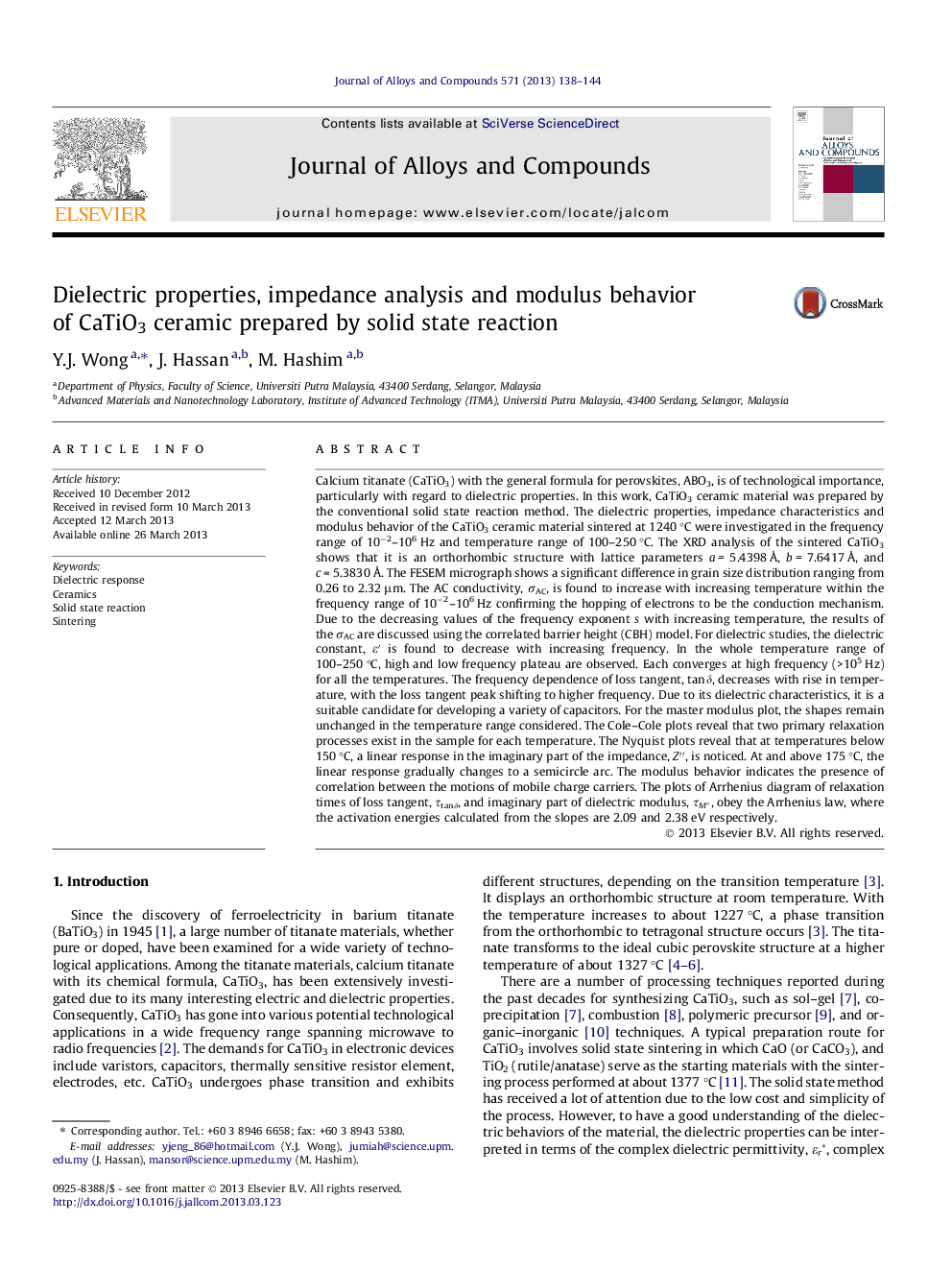| کد مقاله | کد نشریه | سال انتشار | مقاله انگلیسی | نسخه تمام متن |
|---|---|---|---|---|
| 1613876 | 1516322 | 2013 | 7 صفحه PDF | دانلود رایگان |

• A single phase orthorhombic CaTiO3 structure with sub-micron grains is produced.
• The frequency exponent ‘s’ is temperature dependent and explained by CBH model.
• The dielectric constant and loss tangent are frequency and temperature dependent.
• The modulus plot reveals the presence of thermally activated dielectric relaxation.
• Cole-cole plot reveals two primary relaxation processes exist in the sample.
Calcium titanate (CaTiO3) with the general formula for perovskites, ABO3, is of technological importance, particularly with regard to dielectric properties. In this work, CaTiO3 ceramic material was prepared by the conventional solid state reaction method. The dielectric properties, impedance characteristics and modulus behavior of the CaTiO3 ceramic material sintered at 1240 °C were investigated in the frequency range of 10−2–106 Hz and temperature range of 100–250 °C. The XRD analysis of the sintered CaTiO3 shows that it is an orthorhombic structure with lattice parameters a = 5.4398 Å, b = 7.6417 Å, and c = 5.3830 Å. The FESEM micrograph shows a significant difference in grain size distribution ranging from 0.26 to 2.32 μm. The AC conductivity, σAC, is found to increase with increasing temperature within the frequency range of 10−2–106 Hz confirming the hopping of electrons to be the conduction mechanism. Due to the decreasing values of the frequency exponent s with increasing temperature, the results of the σAC are discussed using the correlated barrier height (CBH) model. For dielectric studies, the dielectric constant, ε′ is found to decrease with increasing frequency. In the whole temperature range of 100–250 °C, high and low frequency plateau are observed. Each converges at high frequency (>105 Hz) for all the temperatures. The frequency dependence of loss tangent, tan δ, decreases with rise in temperature, with the loss tangent peak shifting to higher frequency. Due to its dielectric characteristics, it is a suitable candidate for developing a variety of capacitors. For the master modulus plot, the shapes remain unchanged in the temperature range considered. The Cole–Cole plots reveal that two primary relaxation processes exist in the sample for each temperature. The Nyquist plots reveal that at temperatures below 150 °C, a linear response in the imaginary part of the impedance, Z′′, is noticed. At and above 175 °C, the linear response gradually changes to a semicircle arc. The modulus behavior indicates the presence of correlation between the motions of mobile charge carriers. The plots of Arrhenius diagram of relaxation times of loss tangent, τtanδ, and imaginary part of dielectric modulus, τM′′, obey the Arrhenius law, where the activation energies calculated from the slopes are 2.09 and 2.38 eV respectively.
Journal: Journal of Alloys and Compounds - Volume 571, 15 September 2013, Pages 138–144